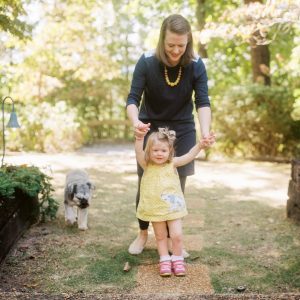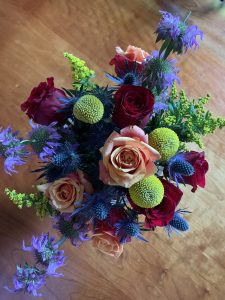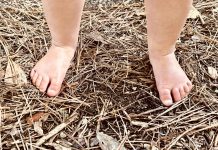I am an avid podcast listener. Back in the good ol’ non-pandemic times, I listened to them in my van as I shuffled children to and from activities or while out running errands. Now that we are home – all day, every day – I listen to podcasts while cleaning the kitchen or while prepping for dinner. One of my favorite podcasts to play as I mindlessly chop ingredients is “Everything Happens, a Podcast with Kate Bowler.” The tears running down my cheeks by the end of most episodes have little to do with the onions I’m dicing and everything to do with the tenderness with which Kate approaches human suffering. Her guests are people profoundly affected by the adversity of our human condition. Their stories are met with Kate’s gentle listening and poignant wisdom. Although this podcast deals with heavy issues, I finish each episode lighter, with a greater understanding of the human experience. As someone who has gone through suffering, I feel heard. Understood. Ministered to by this podcast.
Kate Bowler’s podcast (and book!) have taught me that community can be formed when we vulnerably share our stories. I would like to share my family’s story with you.
Our family experienced a profound line in the sand, a sharp before and after, on July 3, 2014 — a date when most people are stocking up on fireworks and hot dogs, purchasing t-shirts of red, white, and blue. On that date, my husband and I carried our daughter Luisa into the office of world-renowned Rett Syndrome specialist Dr. Alan Percy. At that time, she was 20 months of age and had been receiving home therapy through Early Intervention. For over four months she was classified as having Global Development Delay, the closest diagnosis the team could assign to her delays.
Luisa was born perfectly healthy on October 24, 2012. She was welcomed to the world by her two older siblings, Sophia and Vincent. Luisa was my calmest newborn, sleeping in three-hour shifts, waking to nurse sweetly before falling back asleep. She had the roundest cheeks, like Snowball confections. Like all mothers, I adored every inch of my baby. I delighted in her smiles and meticulously cared for her as a well-seasoned mom.
Luisa developed normally in her first year of life, reaching all the early milestones of rolling over and sitting up. As her first birthday approached, she had several words in her vocabulary including “Momma!” and “Bunny!” (for her chosen lovie). There were a few things I found odd about her development, including her tendency to roll across a room rather than crawl. She also had episodes of intense, inconsolable fits, but I wrote these off as a characteristic of a sensitive baby. Perhaps in life she would be tender-hearted, a deep feeler. I could hardly categorize these quirks as abnormal.
It was around sixteen months of age when Luisa’s development stalled. While she had learned to crawl on all fours by this time, she couldn’t pull to stand. She wasn’t adding new words to her vocabulary as her siblings had at that age. There were other odd things including the deep shade of purple I often saw in her feet when I removed her socks, as well as her inability to master drinking from a bottle or sippy cup.
So, while Early Intervention and private therapies worked on teaching her to stand, to communicate through gestures, and to strengthen her oral motor muscles, I began to set up doctor appointments, first with her pediatrician and then with a neurologist. I was a mother on a mission, determined to find the root cause of my daughter’s delays and puzzling symptoms. Our search would take a little over five months and would end on July 3, 2014, when we found ourselves in one of only a few Rett Syndrome Clinics in the nation in our very own Birmingham, Alabama. I had dressed Luisa that day in a festive bubble with blue stars, a nod to the July 4th weekend ahead. After a long and exhausting exam and parent interview, our daughter was diagnosed with what we had suspected but prayed against for the last five months: Rett Syndrome.

Rett Syndrome is a rare neurological disease that primarily affects girls. It is a genetic condition, but it is not passed down through generations. It is caused by a spontaneous mutation on the MECP-2 gene, and therefore it can strike any family at any time. Girls born with Rett Syndrome develop normally until 10-18 months of age when a stalling in development is seen, followed by a regression in previously learned skills. About 50% of girls with Rett Syndrome never learn to walk or lose the ability to walk; 98% never speak or lose the ability to speak. Many girls will Rett Syndrome will develop seizures as well as severe neurogenic scoliosis from progressive muscle contractures. Many exhibit autonomic issues that cause their bodies to struggle with regulating body temperature (this explained Luisa’s purple feet). Most telling are the odd, stereotypical hand movements that you see in girls with Rett Syndrome. These hand stereotypes include clasping their hands together at midline, tapping, hand-mouthing, and clapping. Unable to control these movements, girls lose the ability to functionally use their hands to feed themselves or perform fine motor tasks. Girls also develop breathing abnormalities including uncontrollable hyperventilating, breath-holding, and air swallowing.

It was a devastating diagnosis. I carried my Snowball-cheeked baby girl out of the office that day, and the 4th of July was forever changed for me. For the first few years after Luisa’s diagnosis, I counted down the days until July 3rd with grief and dread. While friends bought hot dog buns and jugs of lemonade, I counted what things were lost. Her speech was the first: the last word to disappear was “Momma,” said on Mother’s Day 2015. While Luisa did learn to walk, her stability and safety have been compromised by the onset of hyperventilating, a breathing abnormality that makes her too light-headed and disoriented to stay upright. While Luisa can bring a few goldfish to her mouth at snack time, most food falls to her lap, her hands functionless in constant clasping. She has difficulty chewing, making mealtime an Olympic event. Scoliosis seems to be a beast we cannot keep at bay, progressively contorting her spine into a question mark.
Over time, Diagnosis Day has lost its power to rob joy. Six years into this journey we light fireworks without tears. We ride in the boat of family friends who have walked the journey alongside us since Diagnosis Day – witnessing and living out the meaning of “community.” The other mothers know how to feed Luisa, offer her juice when she needs it. Watch her while I attempt to get up on those waterskis.
Nowadays, July 3rd feels like any other day with the exception of one special gift given each year to me by my husband – a bouquet of roses and thistles. My husband brings them home to remind us that although there are trials like thistles in this Rett Syndrome life, there is beauty to be found too.
To know Luisa now is to feel in your bones the truth behind the cliché, “a smile lights up a room.” To know Luisa is to understand that words are unnecessary to communicate the feelings of the heart. To know Luisa is to understand that intelligence can be found in the eyes if you pause long enough to sit and engage her. To know Luisa is to experience the humor of a well-timed sideways glance, the joy of a giggle fit that lights up her blue eyes. The triumph of a homemade grilled cheese sandwich consumed to the last bite. To have the privilege of being Luisa’s mother is to understand that love is not constrained by ability: a child need not strive and achieve to be loved. The gift of her presence; the weight of her in my lap; her inherent soul – it is enough.

Perhaps you have never experienced a profound line in the sand, a defining before and after. Perhaps you have experienced many. Another beauty I have found on this journey with Rett Syndrome is the ability to find community in others who have experienced loss. When I listen to Kate Bowler’s podcast, I feel a part of a larger community of strangers. Strangers who have walked the hard roads of life and arrived weary but wiser at their next destination. I have fully embraced the invitation in the introduction of her podcast:
“There are some things you can fix and some things you can’t. And it’s OK that life isn’t always better. We can find beauty and meaning and truth but there’s no cure to being human. So, let’s be friends on that journey. Let’s be human together.”

I agree. Let’s be friends on this journey of the human experience. Let me ask: what podcasts, books, blogs, and/or groups make you feel a part of a larger community?












My daughter has rett syndrome shes 19 were from social circle ga.
Hello Brandy! You understand this journey better than anyone else then! Blessings to you and your daughter…
Comments are closed.